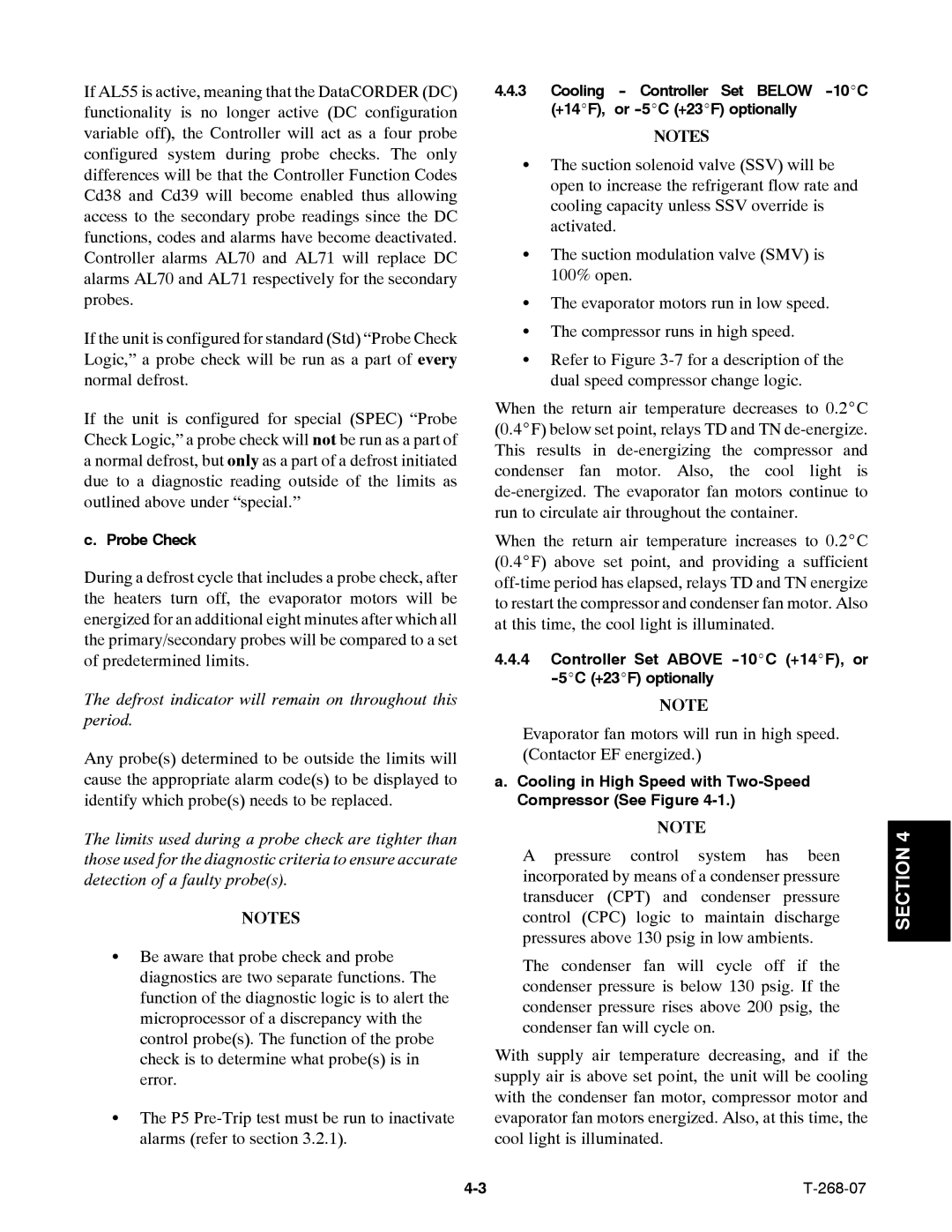
If AL55 is active, meaning that the DataCORDER (DC) functionality is no longer active (DC configuration variable off), the Controller will act as a four probe configured system during probe checks. The only differences will be that the Controller Function Codes Cd38 and Cd39 will become enabled thus allowing access to the secondary probe readings since the DC functions, codes and alarms have become deactivated. Controller alarms AL70 and AL71 will replace DC alarms AL70 and AL71 respectively for the secondary probes.
If the unit is configured for standard (Std) “Probe Check Logic,” a probe check will be run as a part of every normal defrost.
If the unit is configured for special (SPEC) “Probe Check Logic,” a probe check will not be run as a part of a normal defrost, but only as a part of a defrost initiated due to a diagnostic reading outside of the limits as outlined above under “special.”
c. Probe Check
During a defrost cycle that includes a probe check, after the heaters turn off, the evaporator motors will be energized for an additional eight minutes after which all the primary/secondary probes will be compared to a set of predetermined limits.
The defrost indicator will remain on throughout this period.
Any probe(s) determined to be outside the limits will cause the appropriate alarm code(s) to be displayed to identify which probe(s) needs to be replaced.
The limits used during a probe check are tighter than those used for the diagnostic criteria to ensure accurate detection of a faulty probe(s).
NOTES
SBe aware that probe check and probe diagnostics are two separate functions. The function of the diagnostic logic is to alert the microprocessor of a discrepancy with the control probe(s). The function of the probe check is to determine what probe(s) is in error.
SThe P5
4.4.3Cooling
NOTES
SThe suction solenoid valve (SSV) will be open to increase the refrigerant flow rate and cooling capacity unless SSV override is activated.
SThe suction modulation valve (SMV) is 100% open.
SThe evaporator motors run in low speed. S The compressor runs in high speed.
SRefer to Figure
When the return air temperature decreases to 0.2_C (0.4_F) below set point, relays TD and TN
When the return air temperature increases to 0.2_C (0.4_F) above set point, and providing a sufficient
4.4.4Controller Set ABOVE --10_C (+14_F), or --5_C (+23_F) optionally
NOTE
Evaporator fan motors will run in high speed. (Contactor EF energized.)
a.Cooling in High Speed with Two-Speed Compressor (See Figure 4-1.)
NOTE
A pressure control system has been incorporated by means of a condenser pressure transducer (CPT) and condenser pressure control (CPC) logic to maintain discharge pressures above 130 psig in low ambients.
The condenser fan will cycle off if the condenser pressure is below 130 psig. If the condenser pressure rises above 200 psig, the condenser fan will cycle on.
With supply air temperature decreasing, and if the supply air is above set point, the unit will be cooling with the condenser fan motor, compressor motor and evaporator fan motors energized. Also, at this time, the cool light is illuminated.
